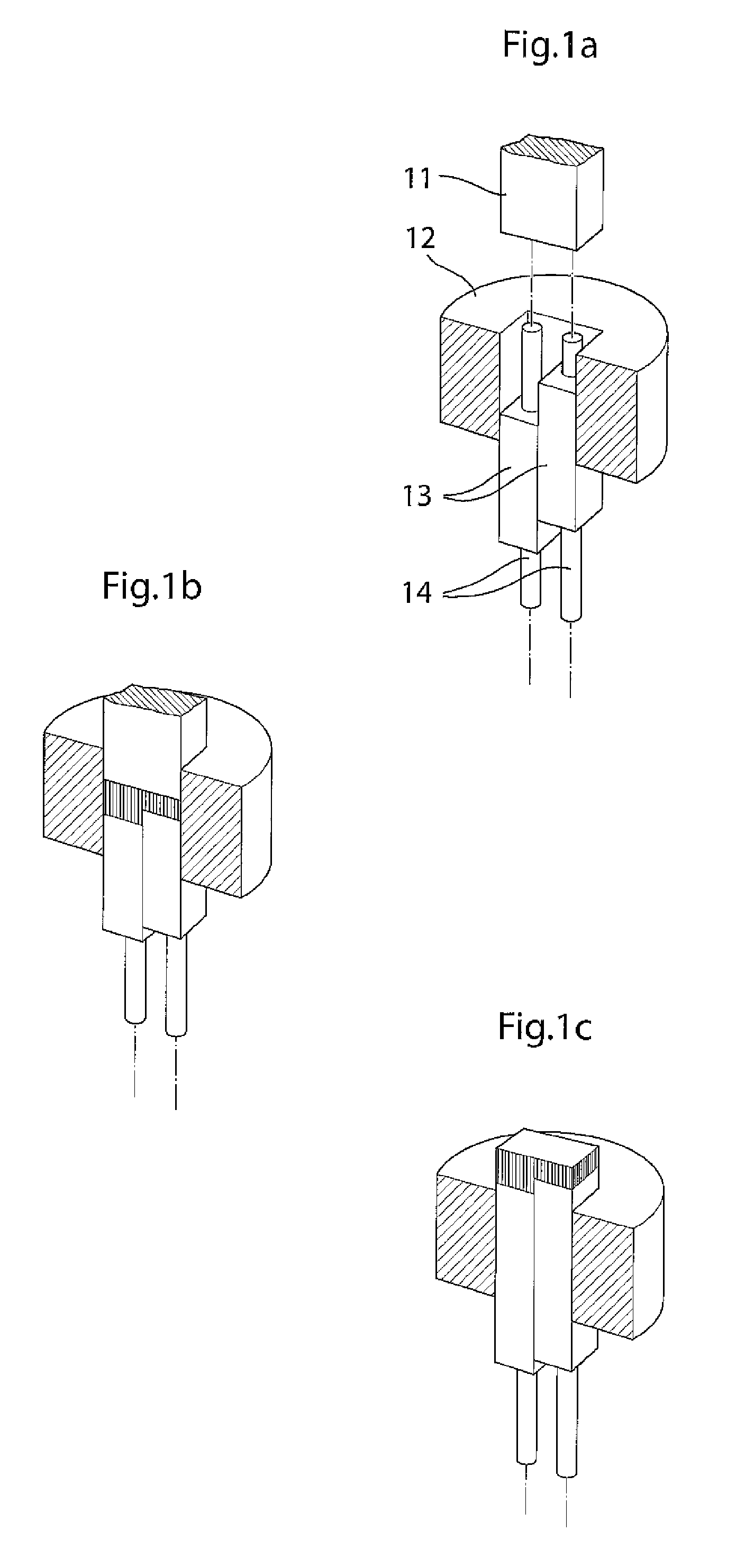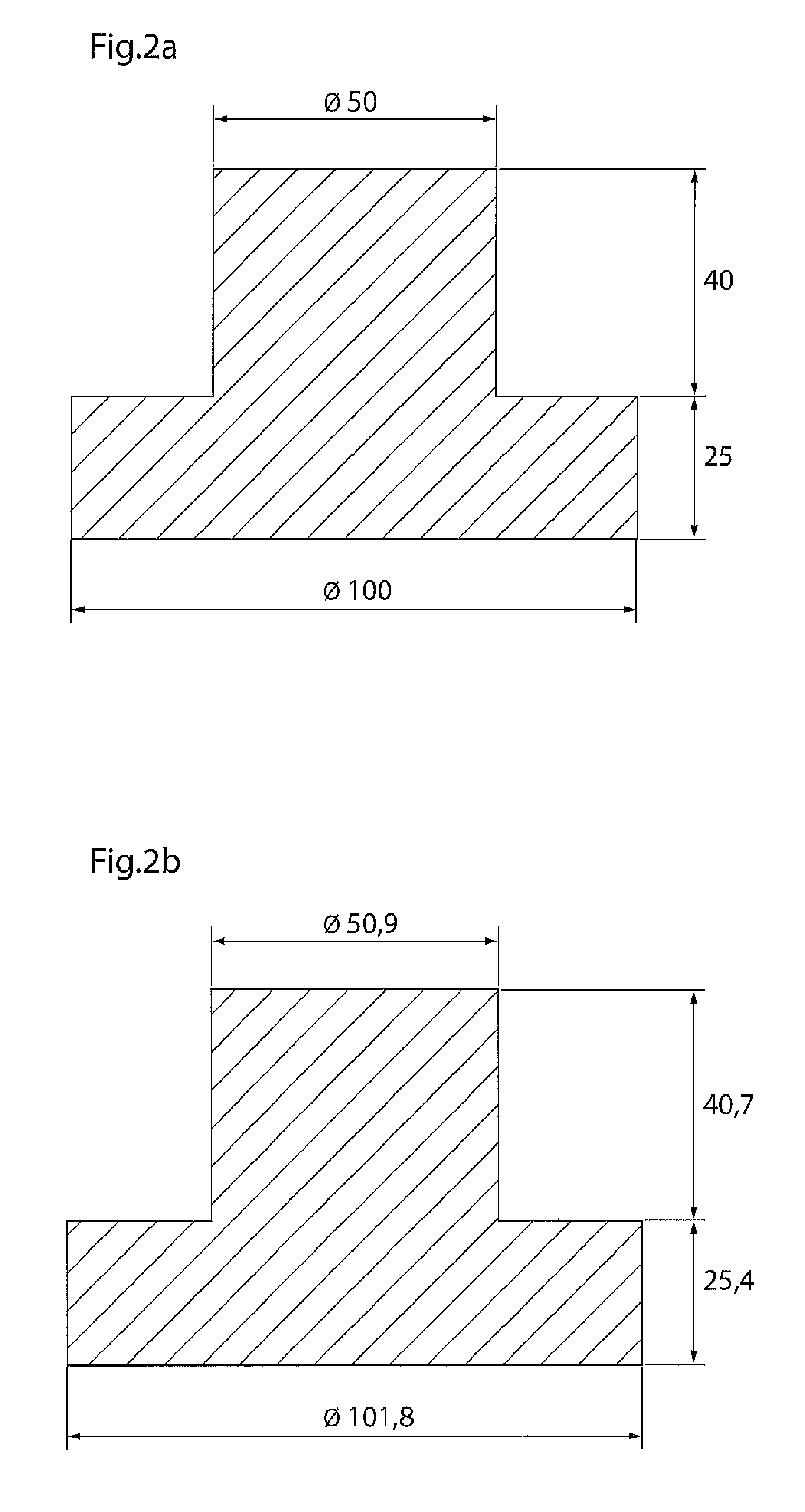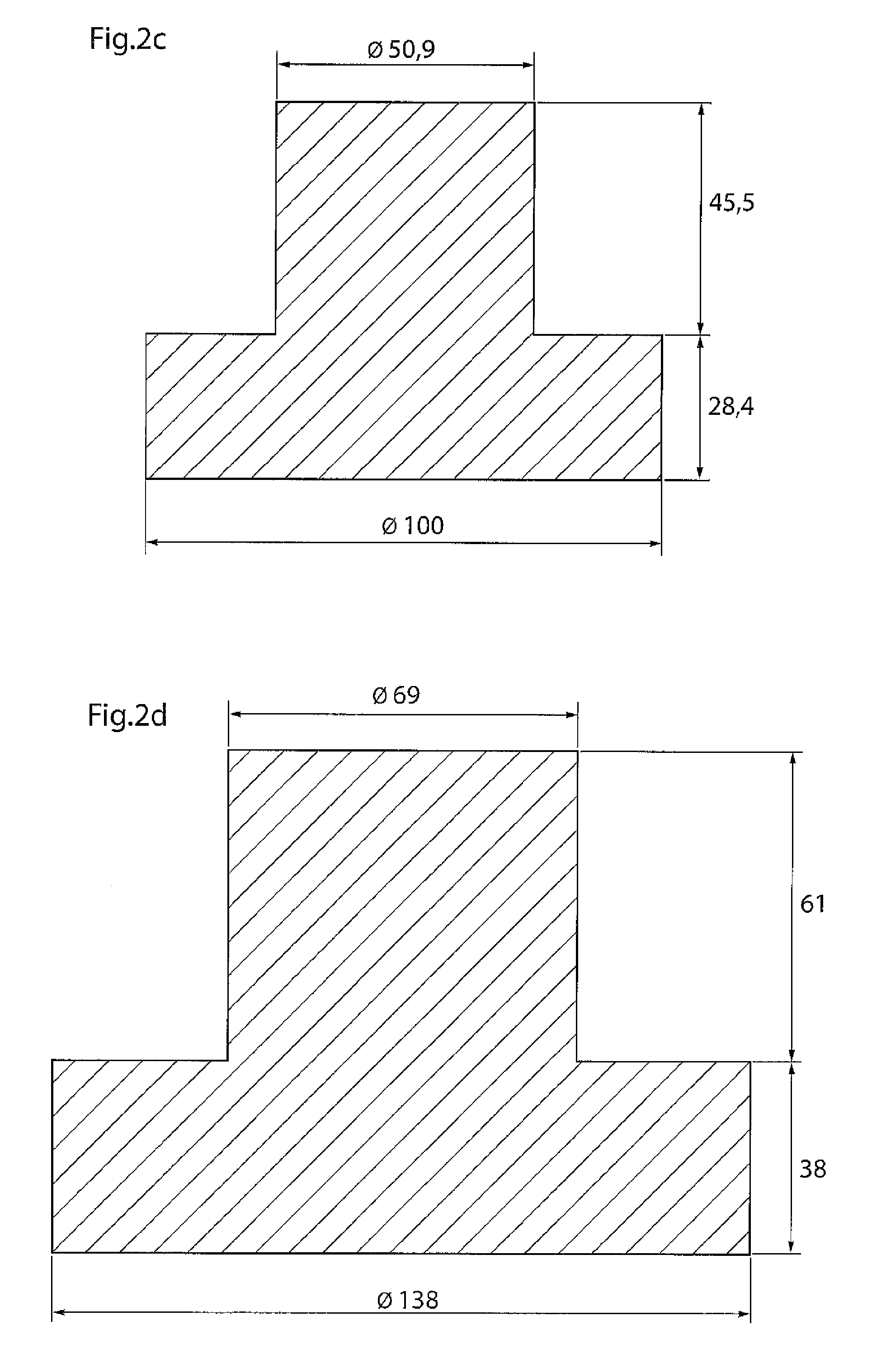Multilevel parts from agglomerated spherical metal powder
a technology of agglomeration spherical metal powder and multi-level parts, which is applied in the direction of thin material handling, transportation and packaging, layered products, etc., can solve the problems of not being able to achieve hvc or similar methods, difficult or even impossible for powder material to flow around in the cavity, and filling all volume, etc., to achieve excellent mechanical properties, excellent tolerance, and full density
- Summary
- Abstract
- Description
- Claims
- Application Information
AI Technical Summary
Benefits of technology
Problems solved by technology
Method used
Image
Examples
example 1
Comparative
[0097]A tooling was used having a space with two diameters according to FIG. 2. The space was filled with the agglomerated powder with a filling density of 3.2 g / cm2. The powder was then pressed at 600 N / mm2 to a density of 84.5% of TD (theoretical density) in a standard uniaxial hydraulic press. Such a multilevel product is not possible to press in a high speed pressing machine (HVC).
[0098]Before sintering, the perform was debinded, i.e. the binder was removed by heat treating in air at 500° C. with 30 minutes holding time. Due to the removal of the binder and risk for blistering effects the heating rate was limited to 200° C. per hour.
[0099]The product was subsequently sintered in hydrogen at 1350° C. with a holding time of 1.5 hours at full temperature. The final density was 99.5% of TD, i.e. in principle full density. The mechanical values fulfilled the ASTM and EN standard values for mechanical properties for wrought steel of the same composition. Minimum values for ...
example 2
[0102]In the same tooling as in example 1, a similar product was made and debinded. After debinding the product was sintered at 1180° C. with a holding time of 0.5 hours. The density increased during sintering from 84.5% to 86% of T.D. After sintering the elongation was 3%. The sintered “preform” was placed in the same cavity and pressed at high speed, HVC, to a density of 95.5% of TD.
[0103]The pressed part was subsequently hot isostatic pressed at 1150° C. with a holding time of 2 hours to full density (99.9% of TD). Due to the high density of the HVC-pressed perform. The tolerances were excellent, see FIG. 3b. the density was varying from top, to middle, to bottom: +0.2%, ±0%, and +0.15% respectively. The mechanical properties were the same as in the earlier test at full density, but with much better tolerances which is important for a multilevel component.
example 3
[0104]In another test cold isostatic pressing was made, at a pressure of 3200 bar. The green density after step a) was 80.5% of T.D. After debinding and sintering as in example 2, the preform was HVC pressed to a density of 95.8% of T.D. and subsequently hot isostatic pressed to full density, i.e. more than 99% TD. The advantage with this operation is the low pressure at the initial pressing operation, which for instance gives a much cheaper tooling cost where polyurethane tooling is used instead of steel or cemented carbide tool due to the longer life length of the tool. One explanation for the better tolerances is the more even density of a HVC pressed body over height, but also that the perform has a very uniform density due to the cold isostatic pressing. This is a very important feature, especially for multilevel products.
PUM
| Property | Measurement | Unit |
|---|---|---|
| pressure | aaaaa | aaaaa |
| pressure | aaaaa | aaaaa |
| ram speed | aaaaa | aaaaa |
Abstract
Description
Claims
Application Information
 Login to View More
Login to View More - R&D
- Intellectual Property
- Life Sciences
- Materials
- Tech Scout
- Unparalleled Data Quality
- Higher Quality Content
- 60% Fewer Hallucinations
Browse by: Latest US Patents, China's latest patents, Technical Efficacy Thesaurus, Application Domain, Technology Topic, Popular Technical Reports.
© 2025 PatSnap. All rights reserved.Legal|Privacy policy|Modern Slavery Act Transparency Statement|Sitemap|About US| Contact US: help@patsnap.com



